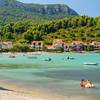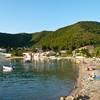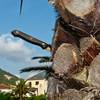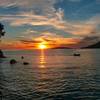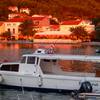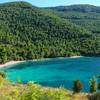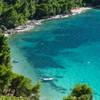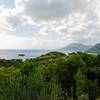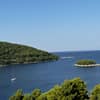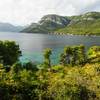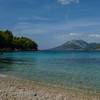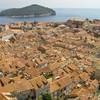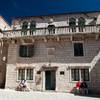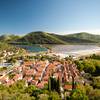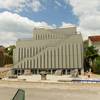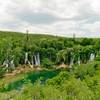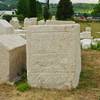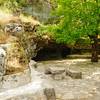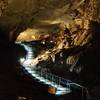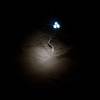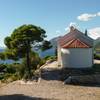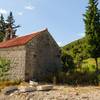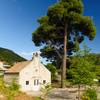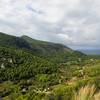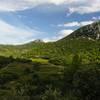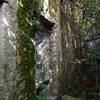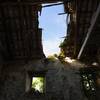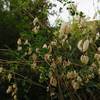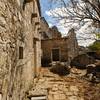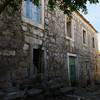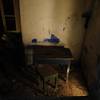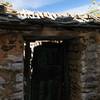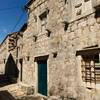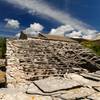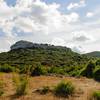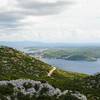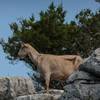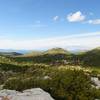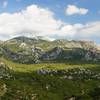Explore famous and hidden beaches
Unique position at the end of a Žuljana valley between two mountain ridges forming the south backbone of the Pelješac peninsula has given rise to many beautiful beaches, of which the largest in the Žuljana bay is virtually entire formed by fine sand. Although the profile of the seabed in Mljet’s channel around Žuljana falls quickly into a standard depth of 90 m, during ten thousand years brought temporary water flow from the Crna Gora plateau clays and limestone deposits here, which makes access to the sea very soft and therefore suitable for small children. You can soak up the sun all day long there.
Another of the beaches are located south of the village in the Vučine bay, which was declared in 1975 as nature reserve. There are two approximately 150 and 50 m long mostly pebble beaches with easy access to the water shaded by pine trees until noon. In the middle of the bay can you look at up to photogenic islet of Kosmač, the second largest islet in the area.
In the smaller bay named Kremena, to which you can descend following the path from the local church of Our Lady of Sorrows or from the Žuljana quay, you can find smaller pebble beaches shaded by pine trees until noon.
Other smaller beaches can be found primarily by individualists or fans of nudism (beach at “Grdni do” cape) on the northern edge of the Žuljana bay and further at the Vodice and Dranče locations. These beaches below the cliffs may be poorly accessible for children or persons with reduced mobility and you can reach them via local path from Žuljana’s municipal playing-field or from newly constructed road to Trstenik with limited parking options.
Trip for well-known attractions
You can make a short trip to famous local attractions as historic walls and saltworks of Ston, maritime museum and Franciscan monastery in Orebić, old town of Korčula, birthplace of Marco Polo with museums, exhibitions, cathedral and churches. Or you can consider Žuljana as base for longer escapes to attractions in Southern Dalmatia (city of Dubrovnik, Narona Archaeological Museum in Vid near Metković) or adjacent Hercegovina (city of Mostar, Kravica waterfalls near Ljubuški, Blagaj near Mostar - spring of the Buna river and a historical tekke - Dervish monastery, necropolis of stećak tombstones at Radimlja and Boljuni locations near Stolac, multiple palaeolithic and hellenistic archaelogical sites, hillforts around and in Stolac, Vjetrenica cave and monastery in Zavala).
Discover rural countryside
Although weather in Žuljana is almost always nice during the summer and warm “jugo” wind blows so one can bath every day, nevertheless it may happen that frontal system comes across the Adriatic sea and after a night storm the sea gets temporarily cooler. This is the right time to go on your own foot or bicycle to explore rural character of the Pelješac peninsula. The first settlement of the peninsula dates back to the time 8000 years ago and since then human leaves visible traces in the surrounding landscape until today. Virtually within sight of the beaches in Žuljana you can admire four different old churches (church of Our Lady of Sorrows above the Kremena and Vučine beach, church of St. Roch-Julian in the middle of a village, church of St. Nikola and St. Martin above the village in a local part called Korta).
When you climb to the last mentioned you can discover not only the beauty of the sunset over the bay, but also see the ruins of old houses and estates from the time when several families of original inhabitants regularly tilled the surrounding vineyards, olive orchards and other grounds. With the arrival of tourists they moved to newer buildings around the bay and the old houses are now in various “half-life”. In case you’re setting off for the “genius loci” of old homesteads Korta, Račići, Pirčići, Pozirne and Jeići, remember your health and do so from a safe distance.
If you’re interested in the similar abandoned villages, set off on a trip away for Orebić and Viganj to the Nakovana (Nakovanj) plateau for the next couple of villages called Donja and Gornja Nakovana. On a hill (called stylish “Grad”) not far from the first one is situated old Illyrian fort (gradina) and nearby are also numerous Illyrian burial mounds (gomila), both discovered in the 70s. To 350 m high unmistakeably shaped hill you can climb up together with local goats and sheep from the southwest at a single place where they’re foundations of a old stone wall still visible. Otherwise is the hillfort protected by 20m high cliffs. Not far from the local church “Mala Gospa” from 12th century is a cave called “Spila” with Illyrian sanctuary and with still active phallus-shaped stalagmite, discovered by archaeologists in 1999, which the Dubrovnik county so far failed to make available to tourists. Using a flashlight you can shine through the bars into the cave at least.
Nearby Žuljana also runs an old Napoleonic road connecting Ston, Orebic and Viganj, whose courageous route runs often high on the mountain slopes for strategic reasons, also waiting for its revitalization. In the neighboring village Janjina (also located under Illyrian fort) near the church cemetery of St. Stephen remains of a Roman country house (villa rustica) were discovered, as well as in Žuljana itself (“Ilijin potok” and Korta locations).
Dive for underwater treasures
The wreck of the German torpedo boat S-57 is perhaps the most well-known wreck on the Adriatic. The crew sank the boat on 19 August 1944. after failing to repair damage sustained from a British warship. The wreck lies around 2 nm east from lighthouse at Lirica islet. One of the main attractions is the ship’s anti-aircraft gun, still intact and with a functional mount, despite so many years spent below the sea.
More informations about diving locations around Žuljana you can find on Barbara Diving Center website.
Taste our wines and Dalmatian cuisine
Try the Ston oysters and mussels here, which are considered to be some of the tastiest and finest shell fish in the Adriatic. Asides from lamb and veal cooked in embers under an iron bell, this region’s gastronomic chapter consists of eel and frog stew from the Neretva valley. Maybe more than anywhere else on the coast, our region offers special sweet pastries where the most famous are Rožata and Kotonjata as well as the Mantalata and Arancina cakes. All this should be accompanied with top quality wines from nearby locations Dingač and Postup.
